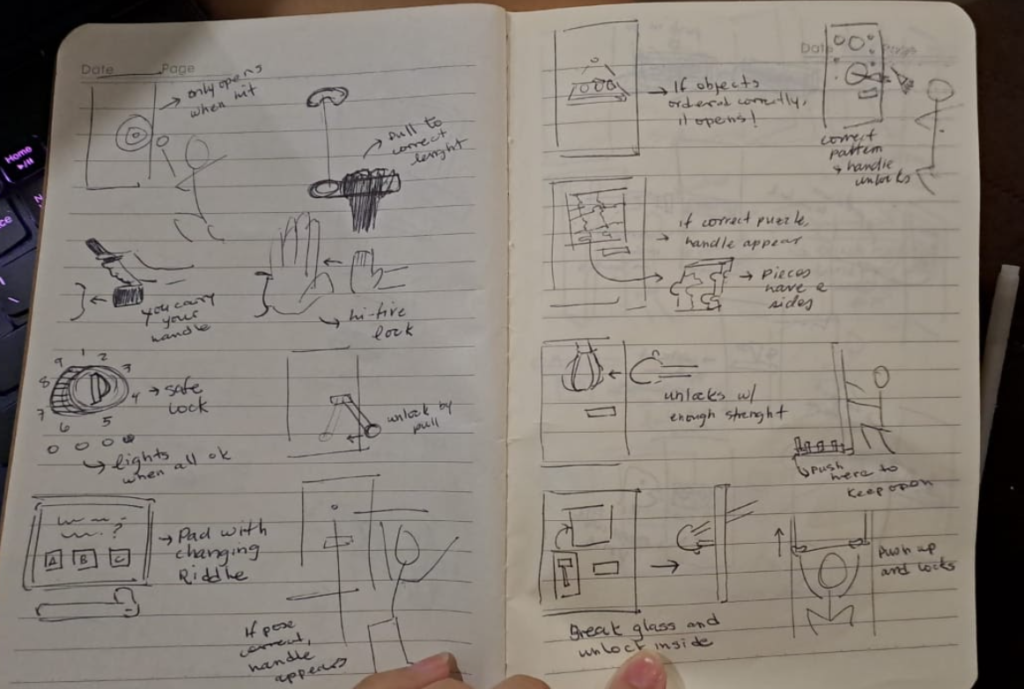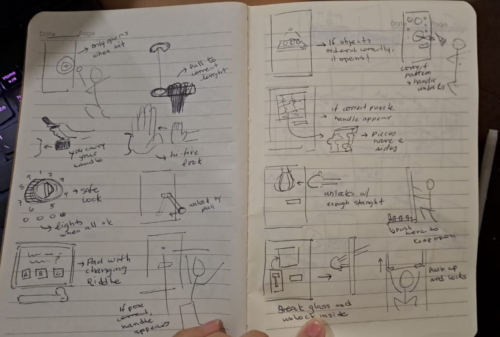
Doodle, Iterate, Repeat!
In November, we finally started one of my favourite parts of the design and prototyping process: doodling!
After a few months of working on the theory part of our theses, we finally moved on to the hands-on phase of our prototype projects. For our first task, we had to get accustomed to doodling and getting a lot of ideas out of our head in a short span of time. Now, what is doodling? And why is it important?
In design, we can define doodling in a short phrase: thinking and making at the same time. Doodling allows us to get the gears of our brain running full speed. Your ideas don’t need to be specific or realistic at this first stage of design. The objective of doodling is to keep designers in a mindset of looking for new solutions to a design challenge without any type of restraints—basically, quantity over quality. The doodles will later be reconsidered and polished in the following step of the design process.
If we think about all of the current products, physical or digital, that are currently on the market, we can know they all started the same: as a doodle.
For this particular class, we needed to take a look around the building and choose an object or product. Easy, right? Well, we needed to make 100 doodles (yup, you read that right!) of ways to redesign that object, all due before the end of the class. We had a span of 3 hours to get those gears running at maximum speed, as we were going to be sharing our ideas with the class.
It’s fun to think how we might have looked to the other students and faculty that were also in the building: a bunch of students with worried looks, trying to find the perfect object, walking around the corridors, entering classrooms, going up and down the stairs and elevators while trying to make 100 doodles of the same object without repeating any idea. Some found their object quickly, some didn’t; most of us did a few doodles before getting stuck with our ideas. But all of us ended up in the same place after an hour: we were blocked.
When you run your gears at full speed, you might find yourself suddenly blocked and unable to continue the flow of ideas. After doodling the same objects 30+ times without stopping, you are due for a blockage or two. We started to move around, trying to get inspiration. Some of us were walking, some were blasting music, and others found quiet spaces to pray—”please, I need another good idea.” Then we all started making little changes to the ideas we had before, but not quite in the same way. They were iterations based on ideas we had previously—because, after all, the focus was meant to be on approaches to the purpose of the object, not on 100 different forms.

This is one of the doodle pages I did for a “Door with Numberpad lock”
It was like a light bulb lit up when we realized that. Ideas started to flow again. Some ideas were wacky, surreal and ridiculous, but those were the best kind, as what we wanted was quantity, to keep those gears turning until the class ended. At the end of the class, we found out most of us were able to finish most of the doodles in this session. We could see the progression of the doodles: they became more chaotic with every new design we added to our sketchbooks. We observed some realistic ideas, some that could be taken from a really imaginative storybook, and some that (unless we knew rocket science) might only be possible in the future. All of this happened in this first class and in the span of 3 hours.
I can’t wait to keep learning and doing hands-on projects like this for the rest of the semester, and I really look forward to the next classes we have, the next doodles we draw, and (maybe) the new products we will get to design.
